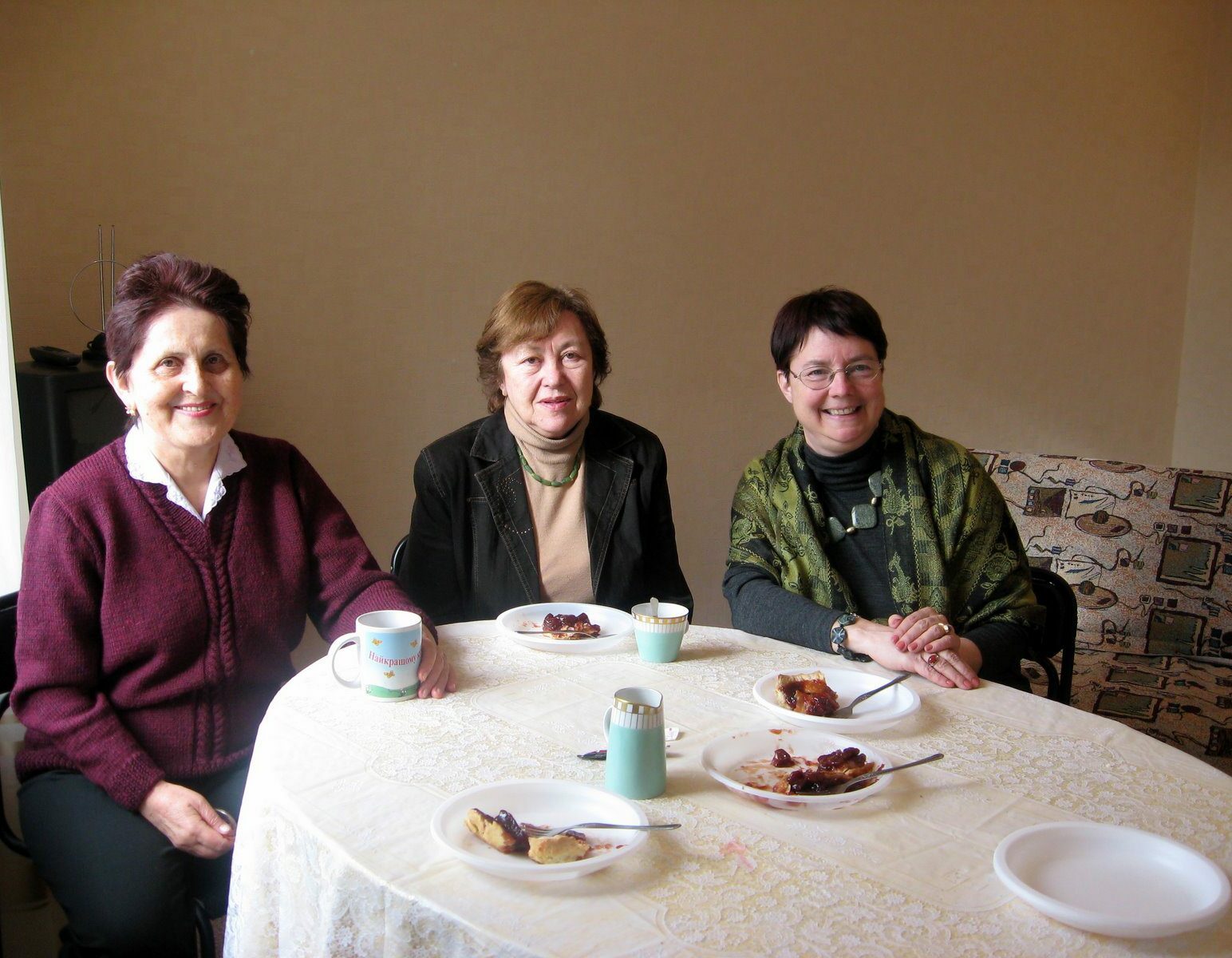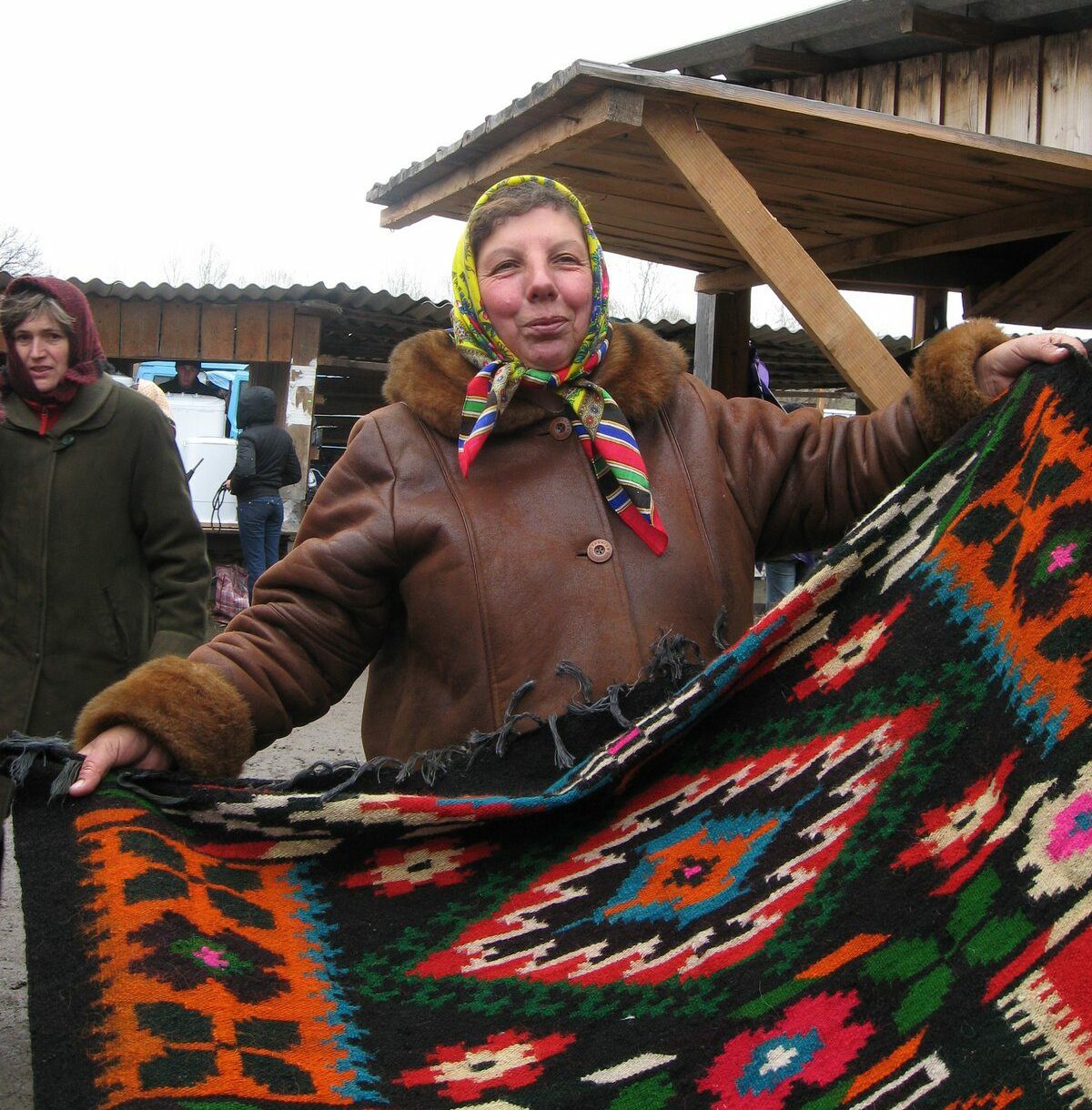Exploring Ukrainian Identity through Culture

“We are a singing and dancing culture.” Enthusiastic nods around the table.
This sentence, this agreement, was the sum total of hundreds of hours of classes and workshops where I asked Ukrainian citizens and students: “What does it mean to be Ukrainian?”
I was trying to understand how Ukrainian identity is structured, enacted, embodied, understood and articulated. It was 2007, just a little more than two years after the 2004 Orange Revolution and the poisoning of presidential candidate Victor Yushchenko (he survived, and won the election).
This country of 44 million people boasts two major languages, Russian and Ukrainian. Language is not identity here. Most speak both fluently. For this ancient culture which predates most European capitals and was described by historians as early as 2500 years ago, and was – and is – home to many ancient and present-day groups (Cimerians, Scythians, Slavs, Hutsuls, Tatars and many more), ethnicity is not identity.

Even national borders, which have been breached and re-established many times, are not coterminous with identity. Religion (one can count at least five significant and many smaller religious groups) is not identity. War victories did not reify identity in Ukraine. In fact, survival through the rampages and divisions of WWI, the Russian Revolution, Stalin-induced famine in 1932-1933, and the country-wide invasions of WWII constitute a kind of Ukrainian cultural miracle.
So if identity is not residence, language, borders, war victories (or losses), religion or ethnicity – but is instead expressions of the soul through cultural means like music and dance – how is it possible trace that identity through the historical record?
As a Fulbright scholar in 2007-8, I found that Ukrainian citizens could agree that culture: art, dance, music, poetry, storytelling, fiction, woodworking form the locus of Ukrainian identity. I began an exploration of galleries, museums, traditional crafts, dance recitals, theater, choral music, churches, synagogues and poetry.
As I listened, the word “Sloboda” came up often: Freedom. This concept is enshrined in the Ukrainian national anthem too, part of which includes this phrase: “We will not spare either our souls or bodies to get freedom”. My colleagues and students reminded me that the Cossacks in the 15th-18th centuries cultivated both their fighting prowess and an early form of democratic decision-making.

One hard fact of Ukrainian history, among many such hard facts, is the intentional starvation of 3.9 million Ukrainians in 1932-33 by Stalin’s USSR — a crime known to Ukrainians as the Holodomor. This is a defining feature of Ukrainian thought and resolve. Three generations have passed since that time. The Holodomor was not acknowledged by most western governments until the following century (beginning in 2008) and is still only recognized by 18 countries. This lack of worldwide recognition of the genocide has galvanized Ukrainians into resistance. They will not be erased.
The USSR never paid a price for this genocide by famine, never paid any restitution, never were brought to an international court, and importantly, never even acknowledged that this famine was intentional. This injustice, this erasure, caused deep psychological wounds and fostered a corresponding distrust of Russia.
Despite many in-migrants to Ukraine from Russia, to work in mines and other industries, and despite the fact that many Ukrainians have grandparents or other relatives in Russia, the fact that Stalin was never punished or even chastened for this, has created the enduring spark of motivation for many Ukrainians. Subsequent statements by Putin that Ukraine doesn’t exist and that Ukrainians are really Russians feed this flame.

I am writing on March 16, 2022. I have been communicating with former colleagues, friends and students in Ukraine in the ensuing years, but also daily and hourly during Putin’s illegal and immoral invasion of a sovereign state. When they say “We will never forgive” and “We will never forget” I believe them. I also believe them when they say “We will not lose.” In my mind, and perhaps in the eyes of the world, Ukrainians have already won the moral fight. They have won the information war. They are standing up to Russia when no one else will.
Early in Putin’s invasion of Ukraine, his missiles burned an irreplaceable trove of original Ukrainian art by Maria Prymachenko. On Friday March 11, his missiles struck Dnipro, dangerously near the city’s historic palace of culture. Along with hospitals and schools, residences, community centers and bus routes, Putin is targeting culture.
The culture – the artists, singers, writers and poets – are fighting back with their best tools, keeping culture alive in subway stations and bunkers. Witness novelist Oksana Zabuzhko’s searing speech to the United Nations for International Women’s Day this year. Consider poet Taras Shevchenko (b. 1814), whose birthday March 9 prompted Ukrainians to recall these famous lines:
Fight – you’ll win the fight,
God is helping you!
Behind you stands the truth,
Behind you stands the glory,
And sacred liberty as well!
Taras Shevchenko, 1845 (Translation by Peter Fedynsky)
One need not, however, look to history to see the resolve of Ukraine’s writers, artists, singers and dancers. Recall that just last week a wounded woman with shrapnel throughout her body composed a poem on her stretcher in a hospital amid bombing outside – a poem about how Ukraine will survive and thrive despite the onslaught from Russia.

There is the Kharkiv violinist Vera Lytovchenko, whose lovely recordings in the bunker have gone viral. Or the world of violinists, many performing in underground shelters, for an achingly gorgeous rendition of a Ukrainian folk song.
Who can forget seven-year-old Amelia who sang “Let it go” from Frozen for her bunkmates? She is Ukrainian; she sang in Russian. Or two pianists, Sasha, Grynyuk a Ukrainian, and Roman Kosyakov, a Russian, playing a Mozart duet?
But take heart, Ukrainians are wrapping and storing their paintings and sculptures to protect them from attacks. Even today, packs of food for soldiers include letters and artwork from Ukrainian children. A volunteer and fundraising effort is reconstituting Youth Symphony Orchestra of Ukraine abroad. When Russia bombed a military training facility near the Polish border, Lviv opera singers offered the beautiful national anthem: “Ukraine’s glory has not yet died, nor her freedom.” Putin cannot kill a singing and dancing culture. He will not extinguish Ukrainian freedom.

Rebuilding is also in the Ukrainian DNA. Strikingly, just two years after the Orange Revolution, which took place in Maidan, the downtown Kyiv square where voters kept vigil, the plaza was all cleaned up and beautiful. Again, in 2018, after the same square had been occupied by protestors for five months in 2013-2014 (The Revolution of Dignity) the square had been improved, and the courage of protestors and martyrs was celebrated and memorialized there.
Dnipro, a city not far from the Donbass front lines, has been the scene from 2014 to the present of long lines of volunteers giving blood, running supplies to Ukrainian soldiers, making food for the soldiers. More recently, Dnipro women were filmed making Molotov cocktails. Through a long eight-year war (so far) this busy city has quickened its step. Residents mounted walls of photos of soldiers, martyrs to the war with Russia. Tanks and war materiel were in the city parks as a reminder to adults and children that the war was only about 200 miles away. It is a Ukrainian tradition to cherish freedom. Ukrainian identity here now means something different than it had in 2007. It means defiance and resistance to Russian oppressors and lies.
Culture is not static. It changes over time, and it is syncretic: it incorporates useful additions from everyone who joins. Tatars, Hutsuls, Jews, Russians, Slavs, Ukrainians, Swedes, Greeks and many others have contributed to the nation that today is Ukraine. Ukrainian colleagues tell me that in 2022 “We are all Ukrainians.” They know the strength of their culture, and they are fighting bare-handed to defend it.
Dr. Linda Gray was a Fulbright Scholar in Dnipropetrovsk (now Dnipro) and Lviv in 2007-2008, and returned to Ukraine in 2010 and 2018. In 2008 she initiated a conference with youth from eastern and western Ukraine, which was planned by university students, “Together we Shape Ukraine.” In 2016 she was a Fulbright Scholar teaching Native American History and Culture at the University of Iceland. Her research focus is on borderlands and identity. She lives in Calais, Vermont, USA.
For more information or further reading/viewing:
Winter on Fire (Netflix)
Timothy Snyder On Tyranny; Bloodlands
Patrick Desbois Holocaust by Bullets
Eva Hoffman After Such Knowledge
Frontline https://www.pbs.org/wgbh/frontline/podcast/dispatch/julia-ioffe-on-putins-road-to-war/
Video of violinists around the world https://www.youtube.com/watch?v=VCYsjcOrK7U
Amelia https://www.youtube.com/watch?v=9VpDjKSSJQ8
Vera Lytovchenko https://www.youtube.com/watch?v=uGizTQTjmsk
PEN Ukraine https://pen.org.ua/en/
Kritika https://muse.jhu.edu/
Foreign Policy https://foreignpolicy.com/2022/03/14/russia-odesa-mykolaiv-ukraine/




